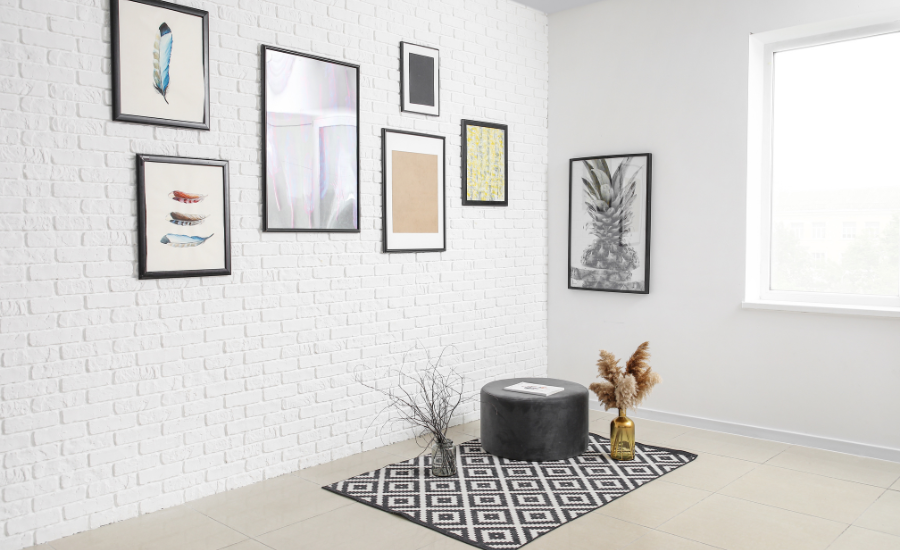In the world of interior design, color often takes center stage—but texture is the unsung hero that truly transforms a space. Whether it’s the softness of velvet against rough concrete or the natural appeal of woven rattan beside polished marble, mixing textures creates depth, dimension, and emotional resonance in your home.
Texture is not just about how something feels—it’s about how it looks and interacts with the other elements in a room. It plays a critical role in making a space feel balanced, layered, and ultimately more inviting. Ready to master the art of texture? Let’s explore how to do it beautifully.
🌿 Why Texture Matters in Interior Design
Texture is the secret ingredient that turns a flat, lifeless room into a rich, dynamic environment. Here’s why it makes a difference:
- Adds Visual Interest: Textures catch the light differently, making the space visually stimulating even if the color palette is neutral.
- Creates Balance: Pairing soft with hard, smooth with coarse, or matte with glossy ensures a harmonious contrast that keeps your interiors from feeling monotonous.
- Enhances Comfort: Think of a cozy wool throw over a leather sofa or a soft rug underfoot on a sleek hardwood floor—texture is all about comfort.
- Expresses Personality: Mixing modern metallics with rustic wood or luxe velvet with raw linen tells your unique design story.
🛋️ Common Interior Textures to Know
To start mixing effectively, it helps to get familiar with common texture types:
- Soft Textures: Velvet, chenille, cotton, wool, suede, and linen.
- Hard Textures: Wood, concrete, marble, brick, metal, and glass.
- Natural Textures: Rattan, jute, bamboo, leather, terracotta.
- Glossy vs. Matte: High-shine lacquer, metal, and glass contrast beautifully with matte ceramics or chalky paint finishes.
The magic happens when you blend these elements with intention.
🎨 How to Mix Textures Like a Pro
Here are smart ways to incorporate multiple textures into your home without overwhelming the space:
- Start with a Neutral Base
A neutral color palette—think whites, beiges, grays, or earthy tones—creates a clean canvas for texture to shine. In a monochromatic room, contrast can come entirely from the surfaces and materials.
Example: Pair a beige boucle sofa with a walnut coffee table, a chunky knit throw, and a linen area rug.
- Layer Soft and Hard Surfaces
Balance is key. A hard concrete or wood floor can be softened with plush rugs or textiles. A metal frame bed gains warmth with cotton bedding and velvet pillows.
Design Tip: Aim for at least one element from each category (soft, hard, natural) in every room.
- Use Textiles to Add Warmth
Curtains, cushions, throws, and rugs are the easiest way to bring in soft textures. Varying the weave, pile, and weight adds subtle contrast.
Try mixing a velvet cushion with a linen one and layering them on a structured leather armchair.
- Incorporate Natural Materials
Organic elements like jute rugs, bamboo lighting, or reclaimed wood furniture add warmth and tactility. They’re timeless and work in almost any style—from coastal to boho to modern farmhouse.
- Don’t Forget the Walls and Ceilings
Think beyond furniture. Textured wallpapers, exposed brick, wood paneling, or even a plaster finish can elevate the vertical surfaces in a room.
Pro Tip: Try a fluted wood accent wall behind a sleek bed for instant texture and drama.
- Mix Finishes in Accessories
Combine shiny with matte, rough with smooth—metallic candleholders on a raw wood console, or glossy ceramic vases against a chalk-painted shelf.
- Be Intentional, Not Overcrowded
While layering textures is encouraged, too many in a small space can feel chaotic. Choose a hero texture, then support it with 2–3 complementary ones.
🖼️ Real-Life Texture Pairings to Try
- Scandinavian Chic: White walls, light oak floors, a gray wool rug, linen cushions, and leather accents.
- Modern Industrial: Concrete floors, exposed brick walls, black metal lighting, velvet sofas, and reclaimed wood furniture.
- Boho Bliss: Rattan chairs, macrame wall hangings, layered cotton rugs, and earthy clay pots.
- Luxe Glam: High-gloss furniture, velvet upholstery, brass fixtures, and faux fur throws.
Each combination offers a different mood—but what ties them together is their thoughtful use of texture.
✨ Final Thoughts
Texture is what makes a house feel like a home. It’s what turns a sterile, picture-perfect interior into a cozy, character-filled haven. By thoughtfully mixing materials—soft with hard, rough with smooth, organic with refined—you create a space that’s not only stylish but also deeply sensory and satisfying to live in.
So next time you find yourself redecorating or revamping a room, don’t just think about colors and furniture—think about how it feels. Literally. The textures you choose can make all the difference between a room you like… and one you love.


